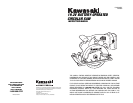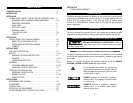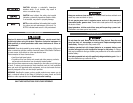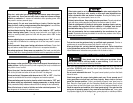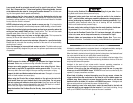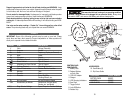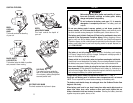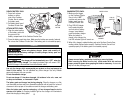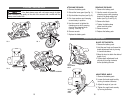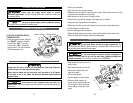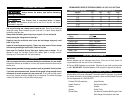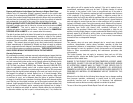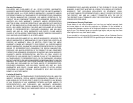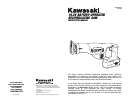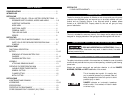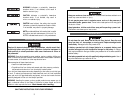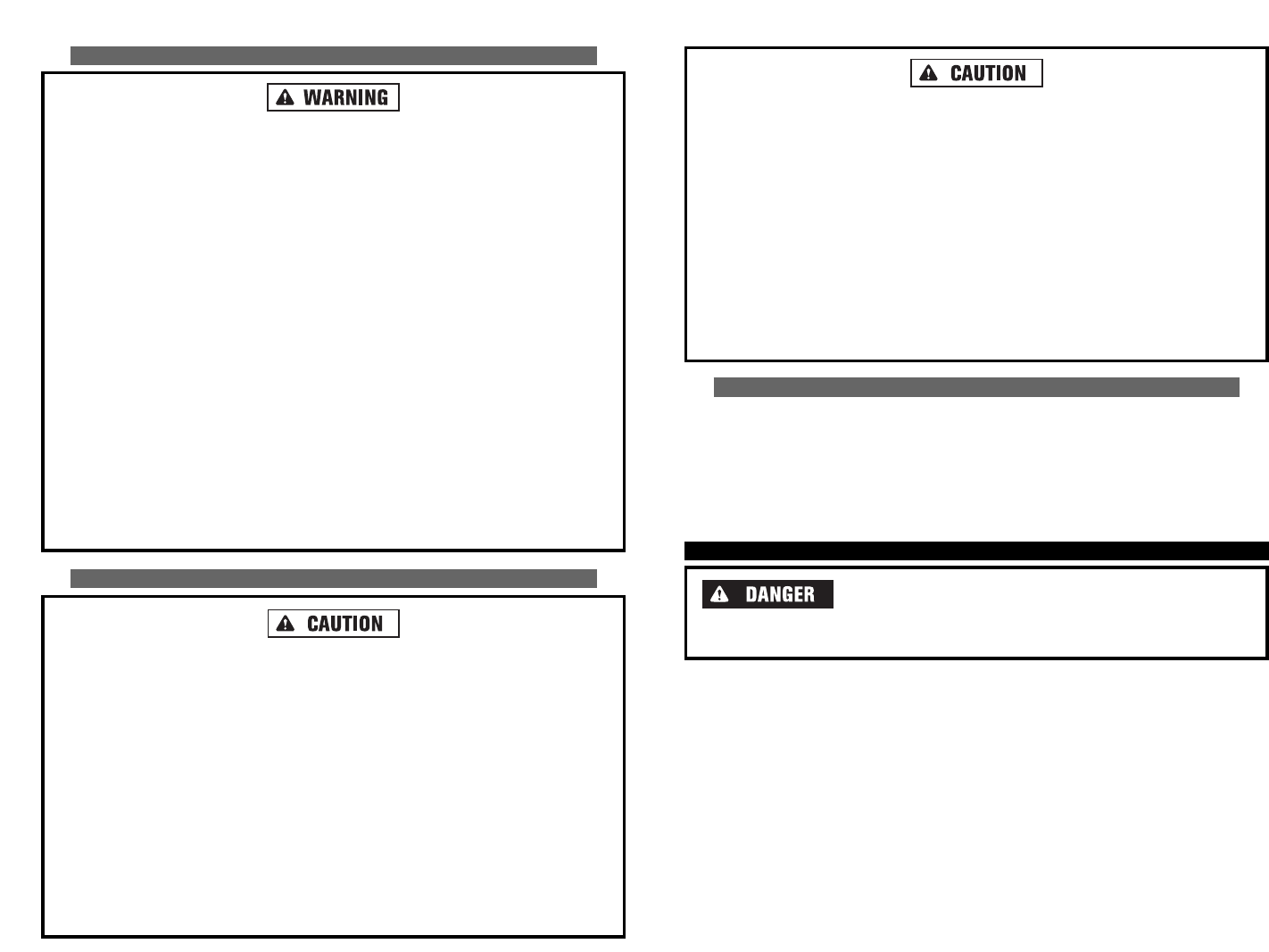
When battery pack is not in use, keep it away from other metal objects like:
paper clips, coins, keys, nails, screws, or other small metal objects that can
make a connection from one terminal to another. Shorting the battery termi-
nals together may cause sparks, burns or a fire.
Maintain tools with care. Keep cutting tools sharp and clean. Properly maintained
tools with sharp cutting edge are less likely to bind and are easier to control.
Check for misalignment or binding of moving parts, breakage of parts, and any
other condition that may affect the tool’s operation. If damaged, have the tool
serviced before using. Many accidents are caused by poorly maintained tools.
Use only accessories that are recommended by the manufacturer for your
model. Accessories that may be suitable for one tool may create a risk of injury
when used on another tool.
SERVICE
Tool service must be performed only by qualified repair personnel. Service or
maintenance by unqualified personnel may result in a risk of injury.
When servicing a tool, use only identical replacement parts. Follow instructions
in the Maintenance section of this manual. Use of unauthorized parts or failure to
follow Maintenance Instructions may create a risk of shock or injury.
SPECIFIC SAFETY RULES AND/OR SYMBOLS
Keep hands away from cutting area and blade. Keep
your second hand on auxiliary handle or motor housing. If both hands are
holding the saw, they cannot be cut by the blade.
Keep your body positioned to either side of the saw blade, but not in line with the
saw blade. KICKBACK could cause the saw to jump backwards
(See “Causes and
Prevention of Kickback”)
.
Do not reach underneath the work. The guard cannot protect you from the blade
below the work.
Check lower guard for proper closing before each use. Do not operate saw if
lower guard does not move freely and close instantly. Never clamp or tie lower
guard into the open position. If saw is accidentally dropped, lower guard may be
bent. Raise the lower guard with the Retracting Handle and make sure it moves
freely and does not touch the blade or any other part, in all angles and depths of cut.
Check the operation and condition of the lower guard spring. If the guard and the
spring are not operating properly, they must be serviced before use. Lower guard
may operate sluggishly due to damaged parts, gummy deposits, or a buildup of debris.
PERSONAL SAFETY
Stay alert, watch what you are doing, and use common sense when operat-
ing a power tool. Do not use tool while tired or under the influence of drugs,
alcohol or medication. A moment of inattention while operating power tools
may result in serious personal injury.
Dress properly. Do not wear loose clothing or jewelry. Contain long hair.
Keep your hair, clothing, and gloves away from moving parts. Loose clothes,
jewelry or long hair can be caught in moving parts.
Avoid accidental starting. Be sure switch is in the locked or “OFF” position
before inserting battery pack. Carrying power tools with your finger on the
switch or inserting battery pack into a tool with the power switch “ON” invites
accidents.
Remove adjusting keys or wrenches before turning the tool “ON”. A wrench
or a key that is left attached to a rotating part of the tool may result in person-
al injury.
Do not overreach. Keep proper footing and balance at all times. Proper foot-
ing and balance enable better control of the tool in unexpected situations.
Use safety equipment. Always wear eye protection. Dust mask, non-skid safe-
ty shoes, hard hat, or hearing protection must be used for appropriate conditions.
TOOL USE AND CARE
Use clamps or other practical ways to secure and support the workpiece to a
stable platform. Holding the work by hand or against your body is unstable and
may lead to loss of control.
Do not force tool. Use the correct tool for your application. The correct tool
will do the job better and safer at the rate for which it is designed.
Do not use the tool if the power switch does not turn it “ON” or “OFF”. A tool that
cannot be controlled with the switch is dangerous and must be repaired.
Disconnect battery pack from tool or place the switch in the locked or “OFF” posi-
tion before making any adjustments, changing accessories, or storing the tool.
Such preventative safety measures reduce the risk of starting the tool accidentally.
Store idle tools out of reach of children and other untrained persons. Tools
are dangerous in the hands of untrained users.
5 6



